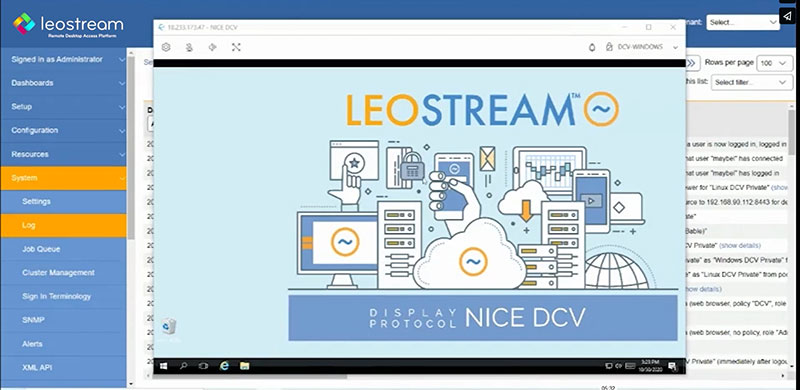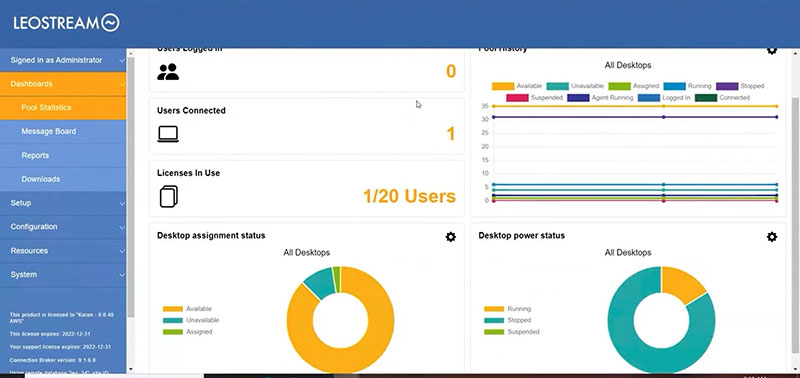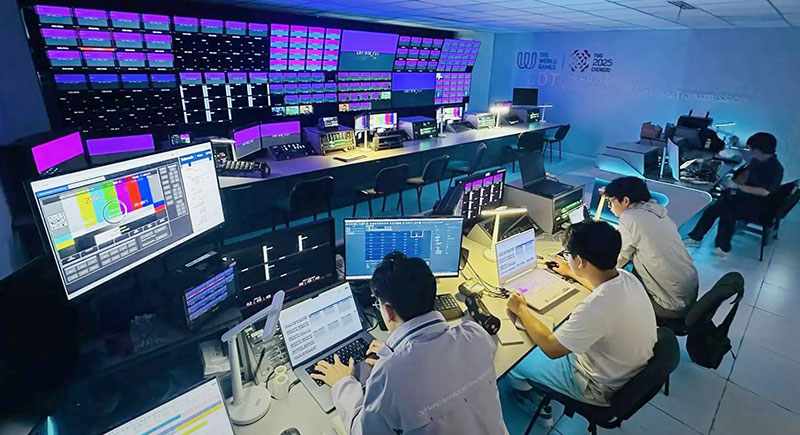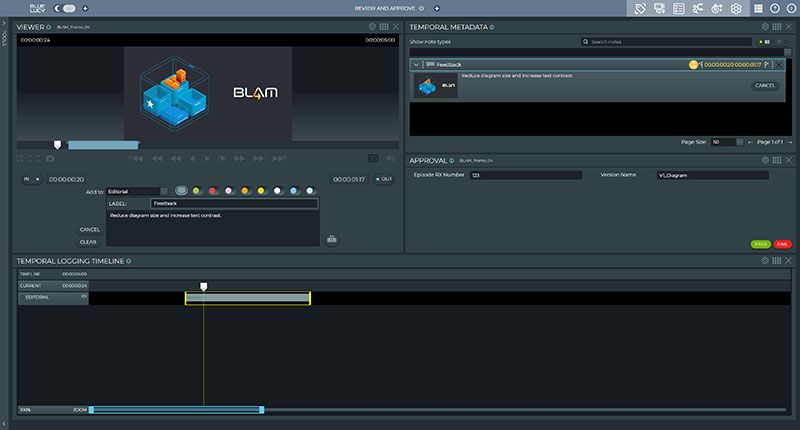Leostream Remote Desktop Access Platform provider added new features to enhance security, management and the end-user experience in VMware vSphere hybrid cloud environments.

Nice DCV is one of the many display protocols Leostream works with.
Leostream Remote Desktop Access Platform provider has developed new features to enhance security, management and the end-user experience in VMware vSphere-based hybrid cloud environments.
The Leostream platform strengthens end-user computing (EUC) capabilities for vSphere users, including secure access to both on-premises and cloud environments, heterogeneous support, and reduced cloud costs. vSphere is VMware's virtualization platform, which allows teams to use data centres as unified operating environments that include CPU, storage and networking resources. vSphere manages the infrastructure in these environments, and supplies the tools to administer the associated data centres.
Leostream’s partnership with Vmware goes back to 2002, after Vmware released its first ESX 1.5 hypervisor, in effect launching the Virtual Desktop Infrastructure (VDI) industry. Leostream then started up and developed a tool to help migrate physical servers to virtual machines hosted on the VMware hypervisor. Over time Leostream focussed on development of its Connection Broker, connection management software for Linux Virtual Machines hosted in ESX and integrating with vSphere.
Today, with the Leostream platform as the single pane of glass managing EUC environments, hosted desktop environments, including individual virtual desktops, multi-user sessions, hosted physical workstations or desktops, and hosted applications, can become simpler to manage, more secure, more flexible and more cost-effective.
Security and Authentication
The Leostream platform leaves data locked in the corporate network, and works across on-premises and cloud environments. It makes it possible for disparate infrastructures to operate with the same levels of security and command over authorisation, control and access tracking. Leostream supports multi-factor authentication and allows organisations to enforce strict access control rules, creating an EUC environment modelled on a zero-trust architecture.

Protocol Support
The Leostream platform was developed originally for heterogeneous infrastructures. As the connection management layer of the EUC environment, the Leostream platform allows organizations to work with vSphere now, and other hypervisors or hyperconvergence platforms in the future, as their needs evolve. To this end, the Leostream platform supports a very wide array of remote display protocols, including specialized protocols for critical tasks.
EUC Experience and Connectivity
Through the Leostream platform, IT developers can make changes to the underlying environment while keeping the end user experience constant, and incorporate AWS, Azure, Google Cloud or OpenStack private clouds into their environment without disrupting end-user’s work. By integrating with corporate Identity Providers (IdPs) that employees are already familiar with, and supplying employees with a single portal they use to sign in, the Leostream platform also simplifies the environment for users.
The Leostream Gateway connects securely to on-premises and cloud resources without virtual private networks (VPNs), and makes managing and maintaining security groups unnecessary. It establishes remote connections using not only RDP but also many other other display protocols such as RemoteFX, Teradici PCoIP, HP ZCentral Remote Boost, Mechdyne TGX, NICE DCV and others. End users have the same direct login and high-performance connection across hybrid environments, including corporate resources located off the internet.
Cloud Cost Control
The Leostream Connection Broker implements automated rules that control capacity and power state in the cloud. From there, organisations can optimise their cloud usage and minimise costs, for instance, by making sure cloud instances aren’t left running when they are no longer needed. The Connection Broker also intelligently pools and shares resources across groups of users, so organisations can invest in fewer systems and reduce its overall cost of ownership.
“These features deliver a streamlined experience with vSphere and hybrid or multi-cloud resources so end users remain productive, and corporate data and applications remain secure,” said Leostream CEO Karen Gondoly. “At a time when there is uncertainty about the future of support for VMware’s end-user computing, it’s important to bring these options to the market to show that organizations can extend vSphere’s capabilities and simultaneously plan for the future without disruption to the workforce.” leostream.com




















